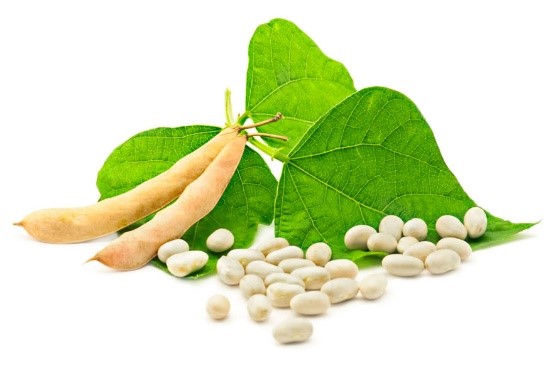1.INTRODUCTION.
Legumes play a soil fertility-enhancing role alongside the association of nitrogen-fixing bacteria (Ramírez-Bahena et al., 2016), making them an important tool in crop rotation programs correlated with the sustainability goals outlined in the European 2030 agenda.
The commercial interest in this crop family primarily lies in its high protein content suitable for both animal (Rubio and Molina, 2016) and human consumption, with proven benefits (Arnoldi et al., 2015; Delgado-Andrade et al., 2016).
2. SOCIO-ECONOMIC IMPORTANCE AT GLOBAL AND NATIONAL LEVELS.
In terms of their socio-economic positioning, legumes are among the most produced crops alongside cereals.
2.1. GLOBALLY.
Centralizing the information received from the latest campaign, we can summarize:
- A 9,6% increase in global production, rising from 369.7 to 405.3 million metric tons.
- Estimates for South American harvests indicate a 4.5% increase for Brazil, reaching 163 million metric tons, while Argentina is projected to increase by 92.0% to 48.0 million metric tons.
- Paraguay would increase its production by 13.6% compared to the 2022/23 campaign (8.8 million metric tons), reaching a harvest of 10 million metric tons, returning to levels that were typical until the 2020/21 cycle.
- In this new report, the United States is estimated to have a harvest of 117.0 million metric tons, representing an increase of only 0.6% compared to the 2022/23 cycle, when 116.4million metric tons were reached.
- Export activity would be led by Brazil with 96.5 million metric tons, growing by 2.7% compared to the previous cycle (94.0 million metric tons), while the united states would reach a volume of exports of 50.3 million metric tons, a decrease of 6.6% compared to the previous harvest (53.9 million metric tons).
- Argentina is projected to export 4.6 million metric tons, representing an increase of 21.1% compared to the 2022/23 campaign (3.8 million metric tons).
- China would import 99 million metric tons, a volume similar to that of the previous campaign.
- Final stocks of the oilseed would increase by 17.6% globally, reaching 121.0 million metric tons, supported by increases in stocks in the United States, Argentina, and Brazil.
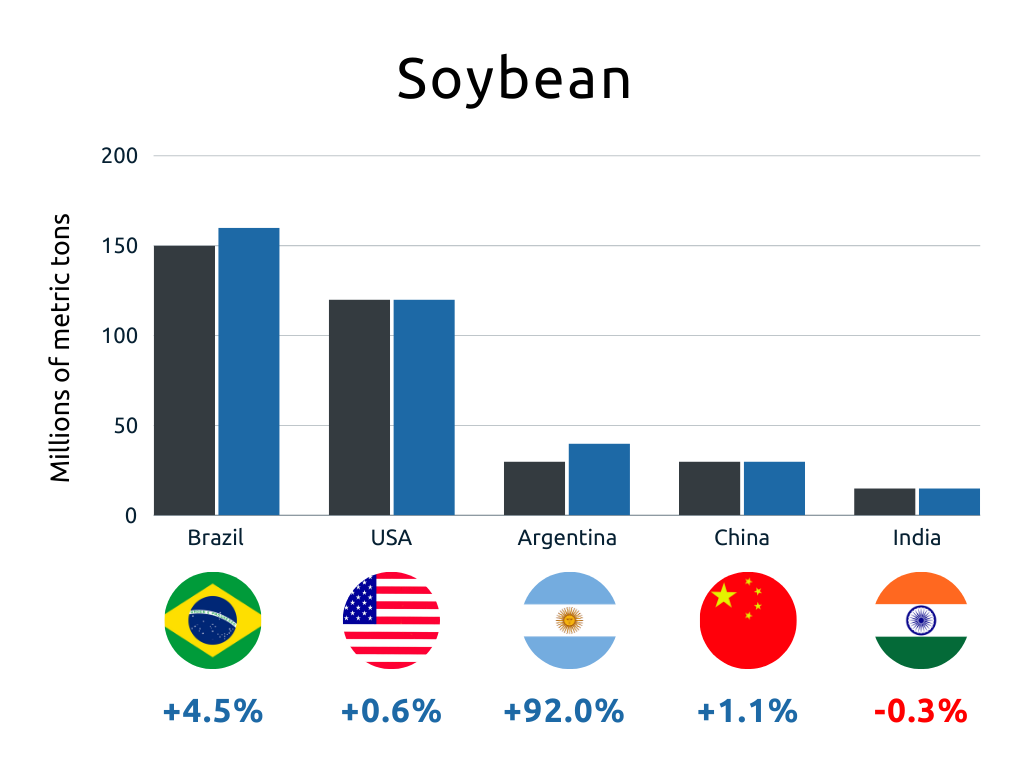
2.2. NATIONALLY.
Soy is not a typical Spanish crop, gaining upward trend and significance in recent years, primarily driven by its use in the animal feed industry and oil production. This crop, without annual updates, has a cultivation area of around 1,450 hectares, of which 98.2% are under irrigation.
Focusing on the last decade, the soy cultivation area has increased significantly with growth rates exceeding 107.4%, averaging a 45.7% increase every five years. This upward trend is attributed to its potential as an alternative to other traditional crops with higher water consumption, such as beetroots or potatoes, coupled with the need for less bio-accumulative fertilizer, presenting itself as a self-fertilizing plant in terms of macro-elements.
Given the variety of benefits it offers, soy is considered an alternative crop for farmers. It requires less water compared to beetroots or potatoes. Additionally, it offers environmental sustainability advantages by using fewer fertilizers, contributing to soil erosion reduction, and facilitating crop rotation.
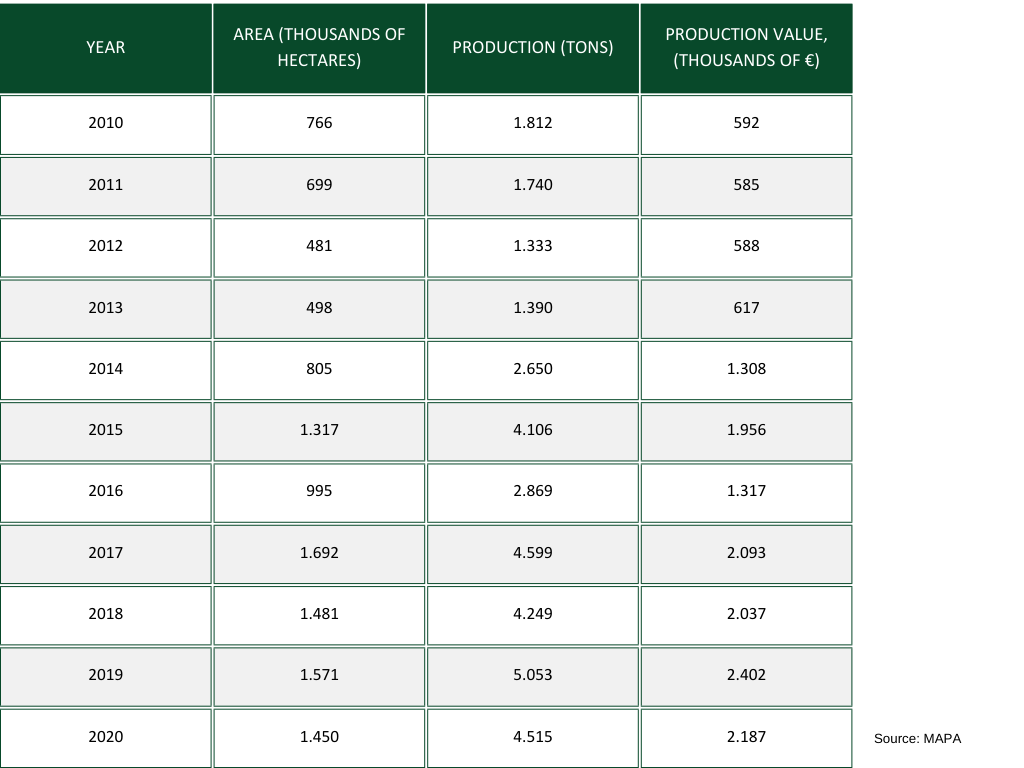
Aragón, with an area close to 540 hectares, is the region with the highest involvement in soybean cultivation in Spain, followed by Extremadura with 516 hectares, Castilla y León with 196 hectares and finally Catalonia with approximately 144 hectares, due to climatic adaption.
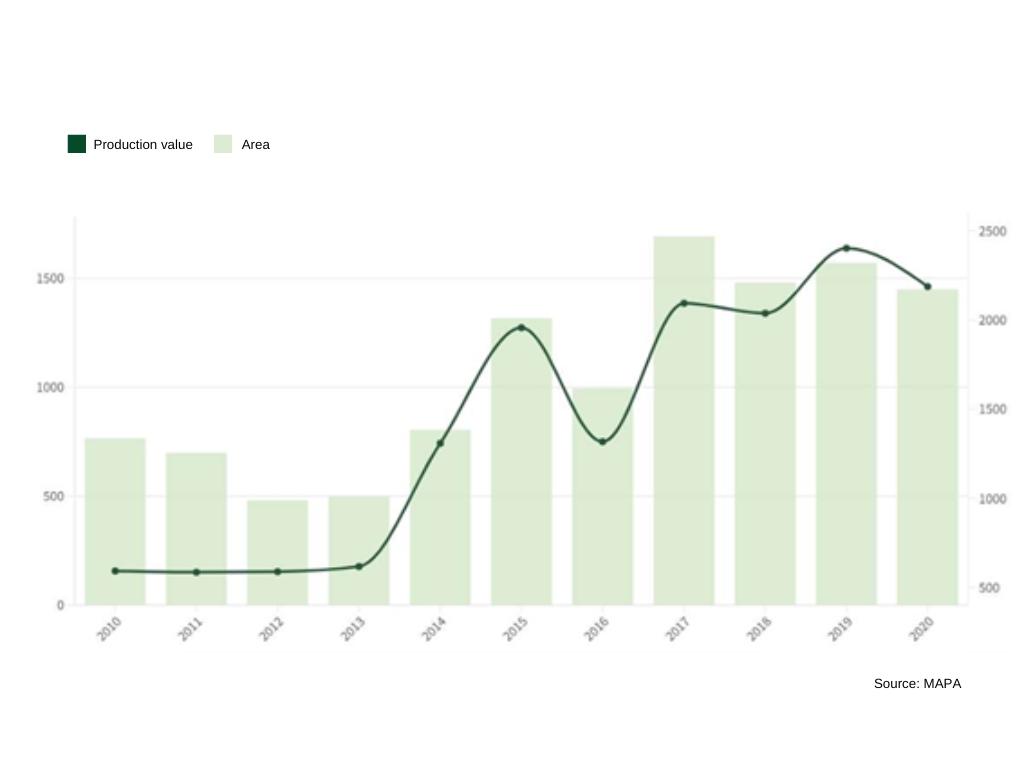
3. HOW TO ENHANCE THE PRODUCTIVE PERFORMANCE OF SOYBEANS AND LEGUMES BASED ON THEIR NUTRITION. THE IMPORTANCE OF COBALT IN LEGUME FERTILIZATION
Cobalt plays a direct role in the symbiotic and atmospheric nitrogen fixation process, which is particularly significant in legumes because these processes are essential for root nodulation.
To clarify, rhizobia are bacteria present in these root nodules, which are incapable of nitrogen fixation on their own, similar de the crop itself. It is the interaction between the two that leads to nitrogen fixation.
These bacteria require oxygen for this purpose, but simultaneously, nitrogenise, the enzyme that catalyses the nitrogen fixation reaction, is deactivated by oxygen.
To control the oxygen concentrations inside the root nodules, leghemoglobin, a regulatory protein, is present, regulating the oxygen concentration levels within the root nodule.
Cobalt is a component of vitamin B12 structure, involved in the synthesis of this protein, thereby indirectly influencing the proper activity of the plant’s nodules. Supplying cobalt results in increased rhizobia growth, and therefore, it’s deficiency or low levels significantly affect the yield of this crop family.
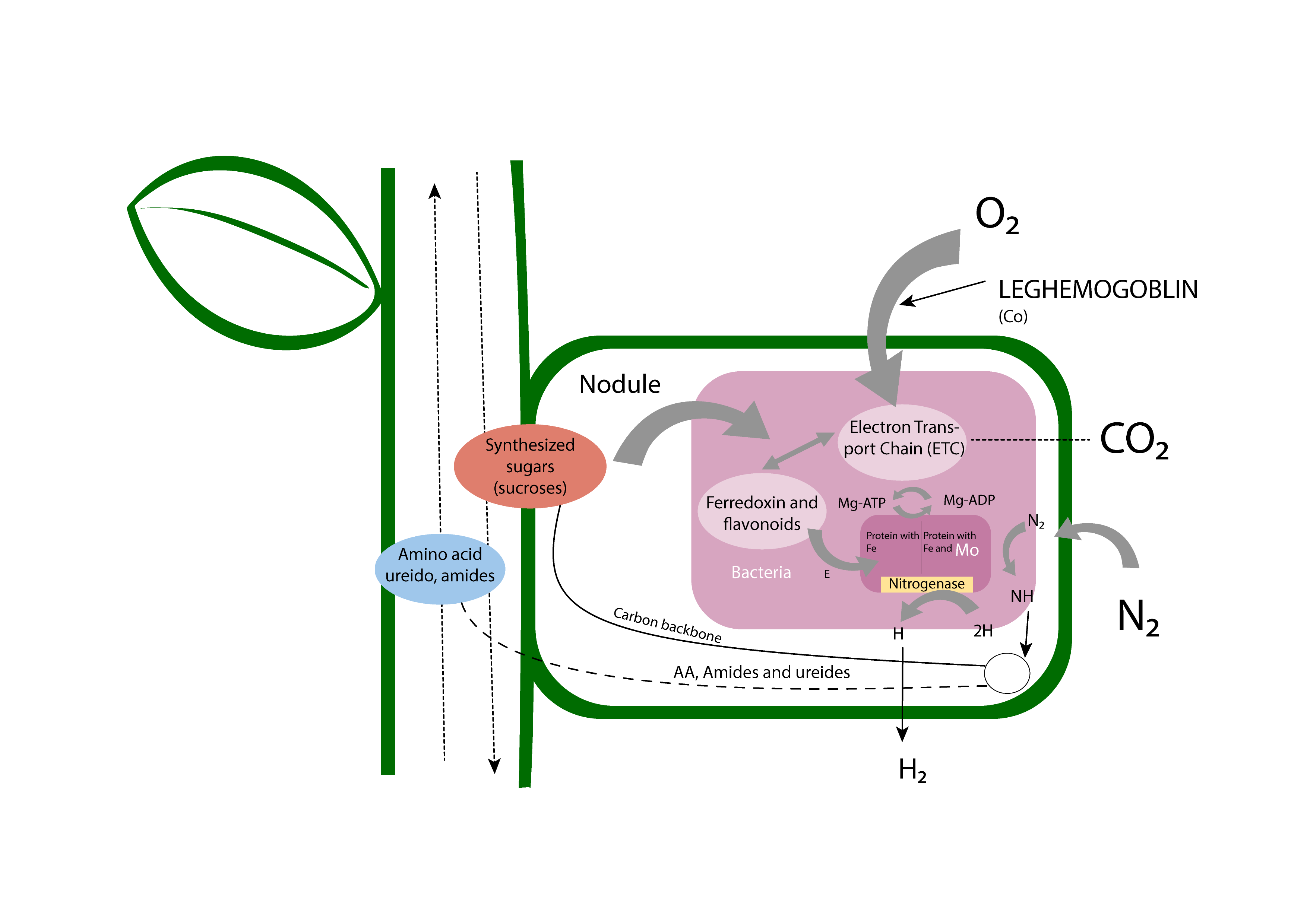
In general, cobalt participates in redox reactions, photosynthetic rate, production of nucleic acids, carbohydrates, fats, sugars, ascorbic acid, activation of nitrate reductases, and accelerates the development of vegetative organs, favouring flowering processes.
The importance of this micronutrient does not stop there, as it has also been indirectly demonstrated that correct balanced levels in legumes improve the assimilation of sulphur, potassium, phosphorus, and magnesium directly from the soil and limit the assimilation of heavy metals.
In light of all this, cobalt deficiency weakens physiological and biological processes, resulting in growth delays associated with nitrogen-fixing rhizobia activity, which can lead to lower-than-desired yields.
At Cultifort S.L., we work to offer crop-specific and phenology-adapted nutritional programs, with the possibility of providing formulations tailored with this micronutrient or beneficial bacteria.


